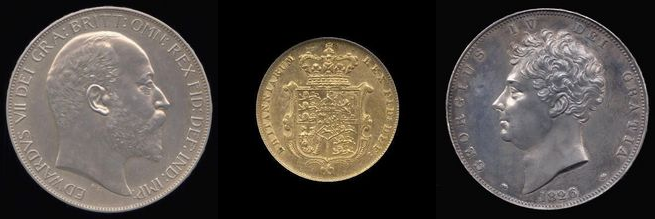

For the sake of brevity, the silver coins only
show when a change was made to the actual silver content. If a particular monarch is missing
for one denomination or the other, this does not necessarily mean that no coins of that denomination
were struck during the reign. Silver denominations are listed from 1066 to 1970.
In the case of the gold coins, every effort has been made to include each denomination for all monarchs. If
the weight and fineness of a particular denomination continued unchanged into a subsequent reign,
it will be listed for both the initial period and the subsequent monarch(s). Total coin weights
(ie, precious metal content plus base metal content) are given in grains (see
here for a table of conversions).
Fineness for the gold coins is given in carats and percent fine, ie a coin of 22 carats gold is also
listed as being .917 fine. Weights of the actual gold content are given both in grams and in troy
ounces. Gold coins are listed from the first gold penny of Henry III, which was the first gold coin
struck in England in about 350 years, to the last pre-Decimal gold sovereigns struck during the
reign of Elizabeth II.
Content and Fineness of the Gold and Silver Coins of England and Great Britain in Grams and Troy Ounces
